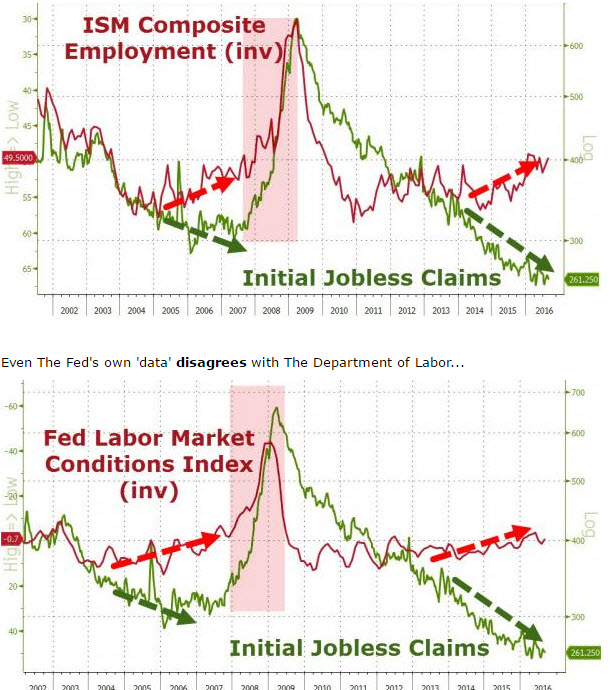The Fuzzy Numbers Behind Initial Job Claims
"Fuzzy Numbers” is one of the most popular video chapters within The Crash Course.
It explains many of the ways that government statisticians routinely distort economic truth, making things seem rosier than they are:
(Video length: 00:20:26)
Please note that this is a non-partisan observation – every administration since LBJ has perpetuated and expanded the practice of economic self-delusion.
Debunking The Initial Jobs Claims Number
Today we’re going to solve the mystery of the low Initial Jobless Claims number we've been seeing recently. It's not nearly as low as advertised once you dig into the underlying 'fuzzy' math.
The 'Initial Jobless Claims' statistic measures the number of people filing for unemployment benefits. If more people are filing, the number goes up; presumably, more people are losing their jobs and the employment rate is falling.
Oppositely, if fewer claims are filed, fewer people are losing their jobs and the employment rate is rising.
So low is good, and rising is bad.
According to government statistics, this number is now pegged at four-decade lows. Things haven’t been this good for the workforce in nearly 40 years!
As Zero Hedge recently reported, “Initial jobless claims remain stuck at four-decade lows (254k this week)... so where are all the jobs?”
(Click on image to enlarge)

(Source)
You’d think that with claims being at 40-year lows, there would be a robust jobs market you could point to -- a lot of confident, happy workers enjoying rising wages. And along with those rising wages, we’d see rising tax receipts.
But we're seeing none of these. So what gives?
The answer is once again found by digging into the "fuzzy numbers" underlying the reported claims.
To understand the '40 year lows' statistic, all you really need to realize is that the proportion of workers eligible to receive such compensation is also at four-decade lows:
SHARE OF UNEMPLOYED RECEIVING JOBLESS AID REMAINED AT RECORD LOW IN 2015
Feb 9, 2016
[T]he majority of unemployed people in the United States don’t get UI benefits. NELP called attention to the record-low recipiency rate for the calendar year 2014 in its report, The Job Ahead. Using the latest data, we find that the recipiency rate in 2015 remained at a record low, with just over one in four jobless workers (27 percent) receiving UI benefits in 2015. Figure 1 below shows the national recipiency rate from 1972 through 2015, reported as a 12-month moving average.

(Source)
Oh, the percentage of jobless workers receiving benefits (meaning eligible for benefits) is at a four-decade low? There! Mystery solved.
As the federal programs of jobless benefits wound down under Obama, the proportion of people covered by Unemployment Insurance (UI) fell. So the number of people eligible to receive benefits fell. And so the jobless claims fell.
Therefore the falling Initial Claims statistic is really a measure of how many fewer people today are eligible for benefits than compared to recent prior periods.It says very little about the state of the job market and a whole lot about how crappy the recently created jobs have been (so bad they don't elevate workers to the point of being eligible for to make a jobless claim).
Just since 2011, the proportion of jobless workers receiving unemployment insurance plunged from 67% to a measly 27%. From two-thirds to just one in four.
That’s a huge drop.
No wonder the Initial Jobless Claims are mired at four-decade lows.
Once again, Fuzzy Numbers like this only require a tiny bit of sleuthing to discover that they are abused to tell the tale that the politicians want to be told. But these accounting distortions are increasingly in conflict with what the rest of us observe with our own eyes on a daily basis.
This isn’t a robust jobs market, it’s the opposite. It’s thin and tenuous. To try and square up the low Initial Jobless Claims number with your own personal reality will only produce massive cognitive dissonance. Because the claims number doesn't reflect reality; it's a manufactured fiction.
In the future, my advice is to trust yourself.Don’t trust the headlines.
Disclosure: None.



